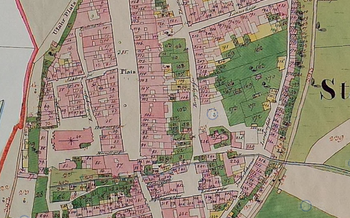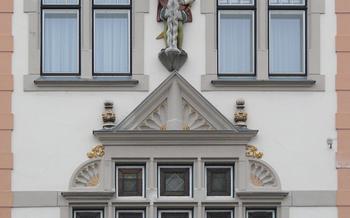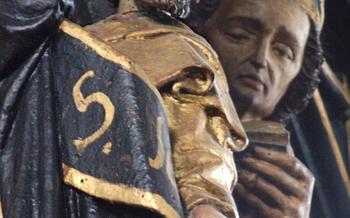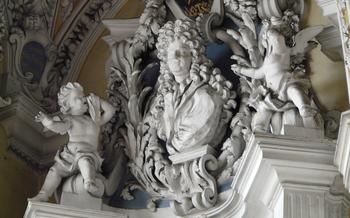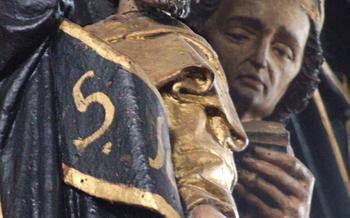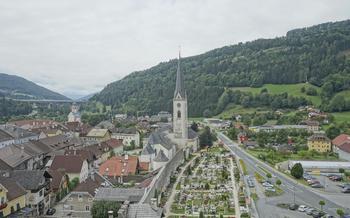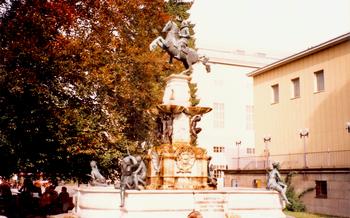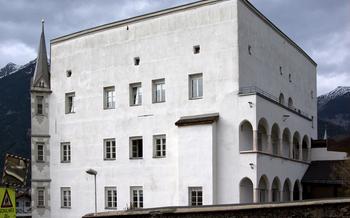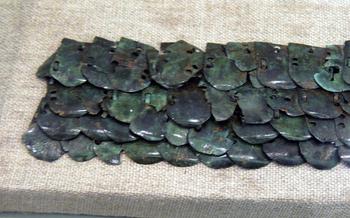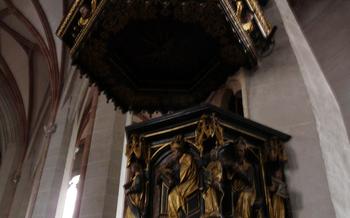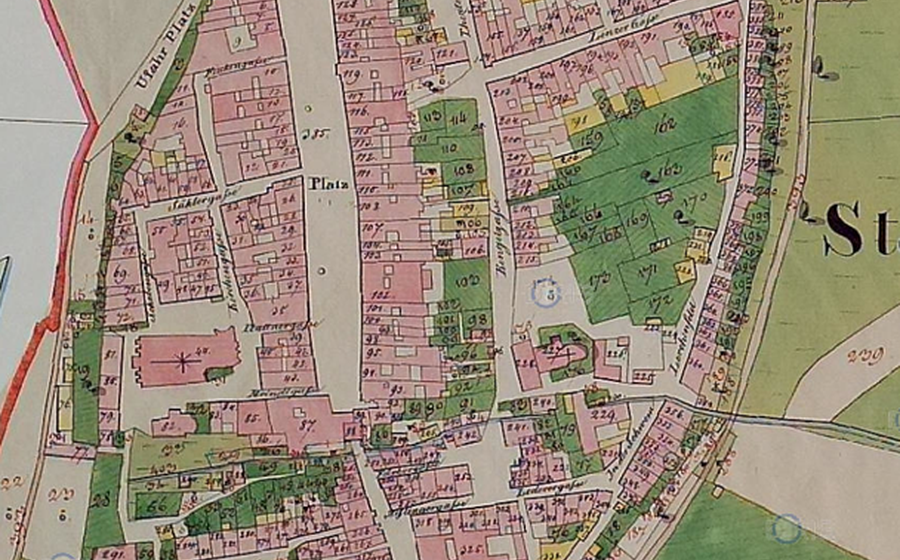
The Braunau Gate (Braunauer Tor)
- The Braunau Gate (Braunauer Tor): A Gateway to History
- Location and Accessibility
- Hours of Operation and Admission
- Historical Background
- Architectural Features
- Defensive Mechanisms
- Gatekeepers and Duties
- Restoration and Preservation
- Legends and Folklore
- Cultural Significance
- Nearby Attractions:
- Tips for Visitors
- Events and Activities
- Photography Opportunities:
The Braunau Gate (Braunauer Tor): A Gateway to History
The Braunau Gate, also known as the Braunauer Tor, stands as a majestic sentinel at the heart of Braunau am Inn, a charming town nestled on the banks of the Inn River in Austria. This imposing gate, with its towering structure and intricate architectural details, is a testament to the town's rich history and cultural heritage.
The gate's historical significance is deeply intertwined with Braunau am Inn's strategic location. As a gateway to the town, it played a crucial role in defending against invaders and safeguarding the town's autonomy. Its sturdy construction and defensive features, such as moats, drawbridges, and portcullises, speak to the gate's importance in protecting the town from potential threats.
Architecturally, the Braunau Gate is a masterpiece of medieval engineering. Its design showcases a blend of Gothic and Renaissance styles, featuring pointed arches, ornate carvings, and imposing towers. The gate's structure is a testament to the skill and craftsmanship of the builders who created this enduring monument.
Beyond its defensive and architectural significance, the Braunau Gate holds a profound symbolic meaning for Braunau am Inn. It stands as a proud representation of the town's identity, resilience, and unwavering spirit. The gate has witnessed countless events and transformations throughout history, becoming an integral part of the town's cultural fabric and a source of pride for its residents.
Location and Accessibility
The Braunau Gate stands tall in the heart of Braunau am Inn, a charming town nestled along the Inn River in Upper Austria. Its exact address is Stadtplatz 16, Braunau am Inn. Visitors can easily reach the gate on foot as it is just a short walk from the town center. Several public transportation options are available, including buses and trains that stop within walking distance of the gate. For those arriving by car, limited parking is available on nearby streets or in designated parking lots. The gate is wheelchair accessible, allowing visitors of all abilities to explore this historic landmark.
Hours of Operation and Admission
The Braunau Gate is open to the public free of charge. Visitors can explore the gate and its surroundings at their own leisure during the following hours:
- Summer Season (April to October):
-
Daily from 9:00 AM to 6:00 PM
-
Winter Season (November to March):
- Daily from 9:00 AM to 4:00 PM
Guided tours of the gate are available upon request and can be arranged by contacting the local tourist information office. The tours typically last for about an hour and provide visitors with a deeper insight into the history, architecture, and cultural significance of the Braunau Gate.
Historical Background
The town of Braunau am Inn was founded in the 12th century and quickly rose to prominence as a trading hub due to its strategic location on the Inn River. The Braunau Gate, constructed in the 13th century, played a crucial role in protecting the town from invaders and ensuring its prosperity.
During medieval times, Braunau am Inn was a frequent target of attacks from rival powers seeking to control the lucrative trade routes that passed through the town. The Braunau Gate served as a formidable barrier, with its thick walls, sturdy towers, and intricate defense mechanisms effectively deterring potential attackers.
The gate has witnessed numerous sieges and battles throughout its history, each leaving its mark on the town's collective memory. In 1504, the forces of Emperor Maximilian I laid siege to Braunau am Inn, seeking to punish the town for its support of his rival, Duke Albrecht IV of Bavaria. After a prolonged siege, the town's defenders were forced to surrender, and the Braunau Gate was breached.
In 1648, during the Thirty Years' War, the gate once again came under attack, this time by Swedish forces under the command of General Königsmarck. Despite fierce resistance from the town's defenders, the Swedes managed to capture Braunau am Inn and occupy the town for several years. The Braunau Gate bore witness to the atrocities committed by the occupying forces during this tumultuous period.
Throughout its history, the Braunau Gate has stood as a testament to the resilience and determination of the people of Braunau am Inn. Its strategic importance and defensive capabilities made it a key factor in the town's ability to withstand numerous attacks and maintain its independence. The gate's enduring legacy is a reminder of the town's rich history and the sacrifices made by its ancestors to protect their way of life.
Architectural Features
The Braunau Gate stands as a testament to the architectural prowess of the medieval era. Its unique design and construction set it apart from other gates in the region. The gate boasts a sturdy stone structure, showcasing the exceptional craftsmanship of the stonemasons who meticulously shaped each block. The imposing towers that flank the gate, reaching towards the sky, add to its grandeur and defensive capabilities.
The gate features a series of arches, each serving a specific purpose. The main archway, through which travelers and goods passed, is complemented by smaller arches that provide structural support and enhance the gate's aesthetics. Exquisite carvings adorn the gate, depicting scenes from local history and mythology, adding a touch of artistry to the otherwise utilitarian structure.
The materials used in the construction of the Braunau Gate reflect the builders' attention to durability and longevity. The gate's foundation is laid on solid bedrock, ensuring its stability. The walls are constructed from thick, quarried stones, carefully fitted together to withstand the test of time. The wooden doors, reinforced with iron fittings, provide an additional layer of security.
The Braunau Gate's architectural features are not merely decorative but also functional. The gate's design allowed for effective defense, with its towers providing vantage points for guards to survey the surrounding area. The portcullis, a heavy iron grating that could be lowered to block the main entrance, offered an additional layer of protection.
The Braunau Gate's architectural significance extends beyond its defensive capabilities. It represents a fusion of military prowess and artistic expression, showcasing the ingenuity and creativity of the medieval builders. As a well-preserved example of medieval architecture, the gate stands as a testament to the enduring legacy of the past.
Defensive Mechanisms
The Braunau Gate, a crucial component of the town's defense system, incorporated several fortifications and defensive mechanisms to protect against potential threats. Moats, drawbridges, and portcullises served as physical barriers to impede attackers. The gate's massive towers provided elevated vantage points for guards to survey the surroundings, while sentry posts allowed for constant surveillance. The strategic positioning of the gate, situated at the town's entrance, allowed defenders to control access and respond swiftly to approaching forces. These defensive features collectively enhanced the gate's ability to withstand sieges and repel invaders, making it a formidable obstacle for those seeking to breach the town's defenses.
Gatekeepers and Duties
The gatekeepers of the Braunau Gate held a position of great responsibility and trust. They were tasked with ensuring the security and smooth operation of the gate, as well as managing the flow of people and goods in and out of the town. The selection process for gatekeepers was rigorous, and only the most capable and trustworthy individuals were chosen for the role.
Once selected, gatekeepers underwent extensive training to prepare them for their duties. They were taught about the gate's defenses, as well as the protocols for opening and closing the gate. They were also trained in combat and self-defense, as they were often the first line of defense against attackers.
The daily routines of the gatekeepers were varied and demanding. They were responsible for opening and closing the gate at specific times, as well as for inspecting all incoming and outgoing traffic. They also kept a watchful eye on the surrounding area, looking for any signs of danger or suspicious activity.
Gatekeepers faced a number of challenges in their work. They were often exposed to harsh weather conditions, and they had to be constantly vigilant against threats from both within and outside the town. They also had to deal with the occasional unruly traveler or merchant who tried to force their way through the gate.
Despite the challenges, the gatekeepers took great pride in their work. They understood the importance of their role in protecting the town, and they were dedicated to carrying out their duties with diligence and professionalism.
Restoration and Preservation
Over the centuries, the Braunau Gate has undergone several restoration efforts to maintain its structural integrity and historical authenticity. The first major restoration took place in the 19th century when the gate's towers and walls were reinforced, and the wooden drawbridge was replaced with a stone one. In the 20th century, further renovations were carried out to repair damage caused by wars and weathering.
One of the challenges in preserving the gate's historical integrity is balancing the need for restoration with the desire to retain its original character. Conservators strive to use traditional materials and techniques to ensure that any repairs or replacements blend seamlessly with the existing structure.
Ongoing maintenance and conservation work is essential to protect the gate from the elements and the wear and tear of time. Regular inspections are conducted to identify any potential problems, and preventative measures are taken to address issues before they become major concerns.
Preserving the Braunau Gate for future generations is of utmost importance, as it serves as a tangible link to the town's rich history. By safeguarding this architectural gem, the community ensures that its legacy will continue to inspire and captivate visitors for years to come.
Legends and Folklore
Surrounding the Braunau Gate, a tapestry of legends and folklore has been woven over the centuries, adding to its mystical allure. One tale tells of a ghostly apparition that haunts the gate, a specter said to be the restless spirit of a former gatekeeper who met an untimely demise. Locals whisper of strange sounds and apparitions seen late at night, casting an eerie spell over the gate's surroundings.
Another legend speaks of a hidden treasure buried beneath the gate, believed to be the spoils of war from a long-forgotten battle. Treasure hunters have endeavored to unearth this hidden wealth, but none have succeeded, leaving the mystery unsolved and the treasure still concealed within the gate's depths.
These legends, passed down through generations, have become an integral part of the Braunau Gate's identity, adding a touch of enchantment to its historical significance. They serve as reminders of the gate's rich history and the enduring power of storytelling in preserving its legacy.
Cultural Significance
The Braunau Gate stands as a symbol of Braunau am Inn's rich history and heritage. It has become an iconic landmark that represents the town's identity and pride. The gate's enduring presence has woven it into the fabric of Braunau's culture. It serves as a reminder of the town's medieval past, its struggles, and its triumphs. Locals take great pride in their gate and consider it a cherished symbol of their community. The gate's cultural significance extends beyond its physical structure. It has become a focal point for local festivals and events. During these celebrations, the gate is adorned with decorations, and its surroundings come alive with music, dance, and laughter. The Braunau Gate represents continuity and a sense of belonging for the town's residents. It is a place where history and community intertwine, creating a unique and vibrant cultural tapestry.
Nearby Attractions:
Braunau am Inn offers a wealth of attractions beyond the Braunau Gate. History buffs can delve deeper into the town's past at the Stadtmuseum Braunau, showcasing exhibits on local history and culture. Art enthusiasts will appreciate the Galerie im Schlossgalerie, featuring rotating exhibitions of contemporary and classical art. For a glimpse into the town's religious heritage, visit the Braunau Stadtpfarrkirche, a stunning Gothic church with intricate stained glass windows and a beautifully preserved interior.
Nature lovers can explore the idyllic surroundings of Braunau am Inn on foot or bike, following scenic trails that wind through lush forests, tranquil meadows, and along the banks of the Inn River. Take a leisurely stroll through the Kurpark, a charming park with manicured gardens, a playground for children, and a duck pond. For a more adventurous experience, embark on a kayaking or canoeing excursion on the Inn River, offering a unique perspective of the town's landmarks from the water.
Braunau am Inn also boasts a vibrant shopping and dining scene. Browse local boutiques and shops for unique souvenirs and handicrafts. Indulge in traditional Austrian cuisine at cozy restaurants and cafes, savoring regional specialties like Salzburger Nockerl, a fluffy soufflé-like dessert, or Käsespätzle, a hearty pasta dish with melted cheese and crispy onions.
Tips for Visitors
When visiting the Braunau Gate, consider the following tips for an enriching and enjoyable experience:
-
Timing: Aim to visit during the late afternoon or early evening when the sun casts a warm glow on the gate, enhancing its architectural features.
-
Dress Code: Respect the historical significance of the gate by dressing modestly and appropriately. Avoid wearing overly revealing or casual attire.
-
Photography: While photography is allowed, be mindful of other visitors and avoid using flash or tripods that may obstruct their view.
-
Safety: The gate is generally safe to visit, but exercise caution, especially if visiting during off-hours or in dimly lit areas.
Events and Activities
The Braunau Gate is not just a historical monument but also a vibrant venue for cultural events and activities. Throughout the year, the gate and its surroundings come alive with a variety of programs and experiences designed to engage visitors and locals alike.
One of the highlights is the annual Medieval Market, which transports visitors back in time to the Middle Ages. Artisans and merchants set up their stalls, showcasing their handcrafted goods and wares, while street performers entertain the crowds with music, juggling, and fire-breathing acts. Visitors can indulge in traditional food and beverages, soak in the atmosphere, and even dress up in medieval costumes to fully immerse themselves in the experience.
For history enthusiasts, guided tours of the Braunau Gate offer a deeper dive into its past. Knowledgeable guides share fascinating stories and anecdotes about the gate's construction, its role in medieval warfare, and the lives of the gatekeepers who guarded it. Tours are available in multiple languages and provide an immersive experience that brings the gate's history to life.
Educational programs are also organized at the Braunau Gate, catering to students and visitors of all ages. These programs focus on the gate's historical significance, architectural features, and its role in the community's heritage. Interactive workshops, hands-on activities, and storytelling sessions engage participants and foster a deeper understanding of the gate's importance.
For those looking to contribute to the preservation of this iconic landmark, volunteering opportunities are available. Volunteers can assist with tasks such as maintenance, restoration work, and educational programs, gaining valuable insights into the gate's history and contributing to its ongoing legacy.
Photography Opportunities:
The Braunau Gate presents a wealth of opportunities for capturing stunning photographs that will serve as lasting mementos of your visit. To make the most of your photography experience, consider the following tips:
-
Best Angles and Vantage Points: Position yourself directly in front of the gate for a classic, symmetrical shot. Alternatively, capture the gate from a side angle to showcase its towering height and imposing presence. For a unique perspective, try shooting from the top of the town walls or from the nearby bridge over the Inn River.
-
Lighting Conditions and Time of Day: The best time to photograph the Braunau Gate is during the golden hours of sunrise or sunset, when the warm light casts a magical glow on the stone facade. If you're visiting during the day, try to avoid harsh midday sunlight, as it can create unflattering shadows and reduce the gate's visual impact.
-
Filters, Lenses, and Camera Settings: Experiment with different filters and lenses to achieve your desired effect. A wide-angle lens can help you capture the gate's grandeur in its entirety, while a telephoto lens can isolate specific details and textures. Don't be afraid to adjust your camera settings to find the perfect balance of exposure, contrast, and color saturation.
-
Sharing Your Photos: Once you've captured your perfect shots, share them with the world! Upload your photos to social media using the hashtag #BraunauGate to connect with other travelers and photography enthusiasts. Tag the official tourism board or city account for a chance to have your photos featured on their pages.
